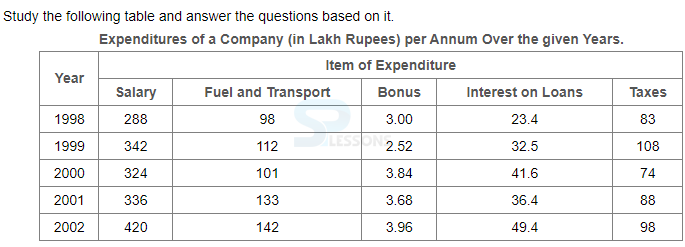 Introduction
Introduction
NABARD Office Attendant Prelims Examination, conducted in online Mode, duration of 90 minutes and each section is separately timed, a total of 120 questions, a maximum score of 120 marks, and, consists of 4 sections, namely – English Language, Test of Reasoning, Quantitative Aptitude, General Awareness. The article NABARD Office Attendant Prelims Quantitative Aptitude provides Test of Quantitative Aptitude (Mcq’s) useful to the candidates while preparing NABARD Office Attendant 2020
 Imp Dates
Imp Dates
NABARD Office Attendant Important Dates
| Event | Date |
|---|---|
| Application Start Date | 25.12.2019 |
| Application Last Date | 12.01.2020 |
| Last Date to pay the Application Fee | 12.01.2020 |
| Download of call letters for Online examination – Preliminary | Preliminary Exam Hall Ticket |
| Preliminary Exam Date | 04th Feb |
| Prelims Result Date | 26-02-2020 |
| Mains Exam Date | March 14 2020 |
| Prelims Result Date | 27-02-2020 |
| Mains Admit Card Release Date | 03-03-2020 |
| Mains Result Date | Will Update Soon!!! |
 Pattern
Pattern
| S. No. | Name of test (objective) | No. of questions | Maximum Marks | Duration |
|---|---|---|---|---|
| 1. | Test of Reasoning | 30 | 30 | Composite time of 90 minutes |
| 2. | English Language | 30 | 30 | |
| 3. | General Awareness | 30 | 30 | |
| 4. | Numerical Ability | 30 | 30 | |
| Total | 120 Questions | 120 Marks |
 Syllabus
Syllabus
| S.No | Name of Test | Syllabus |
|---|---|---|
| 1. | Test of Reasoning | |
| 2 | English Language | |
| 3. | General Awareness |
|
| 4. | Numerical Ability |
|
 Samples
Samples
Directions (1-2):
1. What is the average amount of interest per year which the company had to pay during this period
- A. Rs. 32.43 lakhs
B. Rs. 33.72 lakhs
C. Rs. 34.18 lakhs
D. Rs. 36.66 lakhs
- A. Rs. 544.44 lakhs
B. Rs. 501.11 lakhs
C. Rs. 446.46 lakhs
D. Rs. 478.87 lakhs
1. On selling 17 balls at Rs. 720, there is a loss equal to the cost price of 5 balls. What is the cost price of a ball?
- A. Rs. 55
B. Rs. 60
C. Rs. 34
D. Rs. 43
- A. 6%
B. 7%
C. 4%
D. 5%
1. P can finish a work in 18 days. Q can finish the same work in 15 days. Q worked for 10 days and left the job. how many days does P alone need to finish the remaining work?
- A. 6
B. 4
C. 5
D. 8
- A. 7 hour 30 minutes
B. 8 hour 15 minutes
C. 7 hour 15 minutes
D. 8 hour 30 minutes
1. A man takes 5 hours 45 min in walking to a certain place and riding back. He would have gained 2 hours by riding both ways. The time he would take to walk both ways is
- A. 8 hrs 45 min
B. 11 hrs
C. 7 hrs 45 min
D. 9 hrs 20 min
- A. 112 km
B. 121 km
C. 242 km
D. 224 km
1. A man has some hens and cows. If the number of heads be 48 and the number of feet equals 140, then the number of hens will be
- A. 22
B. 24
C. 20
D. 26
- A. 63
B. 64.5
C. 60.5
D. 62.5
1. If Rs. 10 be allowed as true discount on a bill of Rs. 110 due at the end of a certain time, then the discount allowed on the same sum due at the end of double the time is:
- A. Rs. 20
B. Rs. 21.81
C. Rs. 22
D. Rs. 18.33
- A. gains Rs. 55
B. gains Rs. 50
C. loses Rs. 30
D. gains Rs. 30
1. Find a positive number which when increased by 17 is equal to 60 times the reciprocal of the number.
- A. 3
B. 10
C. 17
D. 20
- A. 69
B. 78
C. 96
D. Cannot be determined
1. The perimeter of a triangle is 28 cm and the inradius of the triangle is 2.5 cm. What is the area of the triangle?
- A. 35[latex]{cm}^{2}[/latex]
B. 42[latex]{cm}^{2}[/latex]
C. 49[latex]{cm}^{2}[/latex]
D. [latex]70{cm}^{2}[/latex]
- A. 600cm
B. 800cm
C. 400
D. 1000
1. What decimal of an hour is a second ?
- A. .0025
B. .0256
C. .00027
D. .000126
- A. 2010
B.2011
C.2012
D.2013
1. A grocer has a sale of Rs. 6435, Rs. 6927, Rs. 6855, Rs. 7230 and Rs. 6562 for 5 consecutive months. How much sale must he have in the sixth month so that he gets an average sale of Rs. 6500?
- A. Rs. 4991
B. Rs. 5991
C. Rs. 6001
D. Rs. 6991
- A. 0
B. 1
C. 10
D. 19





